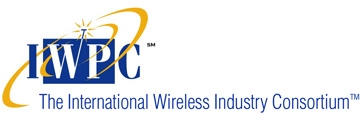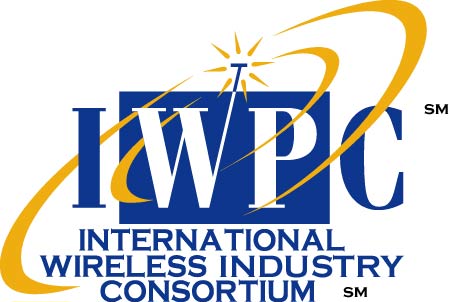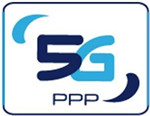The Path to 5G - Continuing the Pre-Standards Debate
Exploring new service models,
use cases, and end-to-end system
concepts
Hosted by:

When
June 15-17, 2015
Introduction
The fifth generation of mobile technology (5G) should enable a fully mobile and connected society and by design, should include embedded flexibility to optimize network usage, while accommodating a wide range of use cases, business and partnership models.
NGMN 5G vision
“5G is an end-to-end ecosystem to enable a fully mobile and connected society. It empowers value creation towards customers and partners, through existing and emerging use cases, delivered with consistent experience, and enabled by sustainable business models.”
Workshop Goals
- Provide the IWPC membership with global operator as well as vertical industries perspectives on potential 5G Use cases, business cases, opportunities and challenges
- Consider how modular network functions could be deployed and scaled on demand, to accommodate various use cases in an agile and cost efficient manner
- Understanding options for a new, radical core network approach, required to meet scalability and cost efficiency demands of a fully connected society and supporting the fixed / mobile convergent nature of 5G.
- Explore the potential and impact of developing a new radio interface driven by use of higher frequencies, specific use cases such as Internet of Things (IoT) or specific capabilities (e.g., lower latency), that goes beyond what 4G and its enhancements can support
Agenda
|
DAY 1 Monday 14:00 |
Deutsche Telekom Tour Registration
-Tour of Network Management Center -Tour of Test Lab |
Transport to site from Hotel
|
||||||
|
19:00 |
Evening Reception |
Hotel |
||||||
|
DAY 2 Tuesday
|
Networking Breakfast and Continued Registration |
Hotel
|
||||||
|
08:00 |
Opening Remarks and Self-Introductions
|
|
||||||
|
09:00 |
Host Keynote Opening Remarks and Presentation
5G is expected to have countless use cases, many unimagined today. As an end-to-end system, it should include all aspects of the network, with a design that achieves a high level of convergence and leverages today’s wireless technologies (and their evolution) as well as fixed and any new access mechanisms to emerge.
|
5G: The Mobile Network as Enabler for Industrial Solutions
VP, Innovation and Research
|
||||||
|
10:00 |
Networking Break |
|||||||
10:40 |
Service Provider Perspectives
The business context beyond 2020 will be notably different from today and will see the emergence of new use cases and business models driven by the customers’ and operators’ needs and enabled by the maturity and emergence of key technologies.
Considering the commercial introduction of 5G will vary around the world from operator to operator, how will global ecosystem players deliver globally and commercially available solutions by 2020?
5G will operate in a highly heterogeneous environment characterized by the existence of multiple types of access technologies, multi-layer networks, multiple types of devices, multiple types of user interactions, etc.
How will mobile operators’ current services evolve and what new services and service models will emerge?
How do service providers deliver data services from multiple integrated access technologies and be ubiquitous and characterized by performance consistency?
Will data traffic be dominated by video and social media? What new services will emerge which may cover new market segments such as automated industries and smart user environments, public safety, mission critical services, big data, proximity and geo-community services?
How will 5G support the evolution of the existing use case of mobile broadband, to support countless emerging use cases with a high variety of applications and variability of their performance attributes?
|
CMCC Research on 5G Project Manager
Toward Realization of 5G Director, Wireless Research Group
|
||||||
|
12:00 |
Networking Lunch |
|
||||||
|
13:00 |
Service Provider Perspectives (continued)
Use cases will be delivered across a wide range of devices (e.g., smartphone, wearable, machine module) and across a heterogeneous environment. Considering these use cases as an input for stipulating requirements and defining the cornerstones of the 5G architecture.
The following shows examples of models that should have to be supported by 5G:
|
Can 5G be a Self-Learning Network Network Strategy Manager
|
||||||
|
13:40 |
Vertical Market Perspectives
|
Challenges of Smarter Grid Operation - Requirements for Cooperation and Communication Senior Consultant Utilities
Energy Turnaround and System Operation
Industry Transformation in the Networked Society Networked Society Evangelist
|
||||||
|
15:20 |
Networking Break |
|||||||
|
16:00 |
Vertical Market Perspectives (continued)
How can 5G mobilize industries and industry processes, including machine communication and the IoT?
What impact will the tens of billions of smart devices using their embedded communication abilities and sensors to act on their local environment and use remote triggers based on intelligent logic have on networks and devices? How will these devices differ in terms of requirements with respect to capabilities, power consumption and cost?
What demands will IoT impose on requirements such as reliability, security, performance (latency, throughput), etc.?
Which verticals and new services (e.g. health, automotive, energy) will drive technology innovation?
In many markets today, network operators are leveraging partnerships with over the-top (OTT) players to deliver packaged services to end users. How will these business models evolve and what requirements (e.g., proximity, location, QoS, authentication) will be needed to deliver optimum user experience?
What enablers should be considered for cost-effective dense deployments? New deployment models, such as integration of third-party / user deployments as well as multi-operator / shared deployments
|
Migration from 4G to 5G
Lead, 5G Research
|
||||||
|
16:30 |
Healthcare Categories Below May Be Most Influenced By 5G Connectivity:
|
Transforming Healthcare through Digital Medicine Assistant Professor of Medicine Qualcomm Wireless Health Scholar
Associate Professor of Medicine Director Ultrasound Care Laboratory
|
||||||
|
17:30
|
End of Day Panel
|
|
||||||
|
18:15 |
Adjourn for Day |
|
||||||
|
19:00 |
Networking Dinner - "Restaurant Godesburg" |
Bus Transportation provided to and from hotel. |
||||||
|
DAY 3 08:00 |
5GPPP Project Review
Outline and discussion regarding projects awarded within the 5G Infrastructure Public Private Partnership
|
The 5G Infrastructure Public-Private Partnership 5GPPP Board Chairman
|
||||||
|
08:40
|
OEM Vendor Perspectives
How can the network core be simplified? – Can NFV and SDN principles be leveraged to provide more flexible functions and capabilities?
It is expected that 5G use cases will demand very diverse and sometimes extreme requirements. Can a single solution satisfy all the extreme requirements at the same time avoiding over-specification and unacceptable cost?
Considering the need for several use cases to be active concurrently in the same operator network, how can a 5G system deliver a consistent user experience over time for a given service everywhere the service is offered?
How widespread can data rates up to 1 Gb/s be supported and in which environments?
Considering a requirement for at least 50 Mb/s to be available everywhere at a reasonable cost, what are the building blocks to achieve this?
Can E2E latency of 1 ms be achieved for the use cases which require extremely low latency?
Considering Network Management (automation, self-configuration, self-healing)
How can operations and management be simplified?
Is an architecture that leverages the structural separation of hardware and software, as well as the programmability offered by SDN and NFV fundamental to the success of 5G?
How does the eco-system ensure harmonization of different identity and authentication paradigms in cellular networks, (wireless) local access networks, and fixed networks to enable convergence of different access types, and also to facilitate the realization of different business models?
Which architectures best facilitate convergence of fixed and mobile networks in a manner that efficiently addresses the needs and requirements originating from regulators?
Will networks be able to serve a massive number of human and Machine-Type Communication (MTC) devices?
What steps are required to support seamless user experience and unified subscriber management in Fixed and mobile converged scenarios?
How does the industry ensure network security for highly heterogeneous environments and uses, as well as protection of user identity and trusted information should?
How can new value creation be supported? Big data analytics and context awareness are deemed essential to optimize network usage, and at the same time to provide added value to the end-user.
How will breakthrough technology advancements, such as Software-Defined Networking (SDN), Network Function Virtualization (NFV), Big Data, and all-IP, change the way networks are being constructed and managed?
Will changes enable the development of a highly flexible infrastructure that enables cost-efficient development of networks and associated services as well as increased pace of innovation?
What major changes or building blocks should be considered to achieve a fundamentally new 5G network?
Can security and privacy be assured?
|
Future Core Network for 5G Manager EPC Research
Rethinking the Mobile Core for 5G Cisco Fellow
|
||||||
|
10:00 |
Networking Break |
|||||||
|
10:40
|
OEM Vendor Perspectives (continued)
How will “Mobility on-demand” be supported, ranging from very high mobility, such as high-speed trains/airplanes, to low mobility or stationary devices such as smart meters?
How is backwards compatibility and not rip and replace achieved for 5G?
Given the wide spectrum of capabilities that need to be delivered, will 5G be comprised of more than one RAT, each optimized for certain use cases and/ or spectrum, hence comprising a “5G RAT family”?
Is a new RAT motivated by higher carrier frequencies (e.g., bands above 6GHz), lower latency, and specific use cases essential?
How can the number of RATs be minimized, ideally down to one?
If multiple RATs are to be introduced, how can commonality be achieved to the largest extent?
Should the protocol stack above layer 2 be harmonized, and the same control functionality applied, thereby making the different RATs rather different modes of operation of a single RAT?
Exploring options to interface the access technologies - Advantages and disadvantages. Should all 5G components of the 5G RAT family be supported by new 5G functions (5GFs) design, while other RATs (e.g., Wi-Fi) and the fixed network are also supported through the new 5GFs design?
Should LTE/ LTE-Advanced and Wi-Fi, as well as their evolution, be supported by the new 5G network design, thus, the access-agnostic network functions accommodates any new RATs, as well as LTE/ LTE-Advanced, Wi-Fi, and their evolution
Can spectral efficiency be significantly enhanced compared to 4G in order for the operators to sustain increased traffic demands under spectrum constraints, without significantly increasing cell sites?
How will coverage be improved to allow the high 5G data rates in rural areas with the current grid of macro sites?
How can 5G be designed with the objective to minimize the Total Cost of Ownership (TCO) of the network infrastructure and the cost of devices?
How can spectrum be leveraged? Considering higher frequencies (e.g., centimeter and millimeter waves) and license exempt spectrum and any spare bandwidth at lower frequencies).
Can simultaneous connections to multiple access points be supported to enable Control/User (C/U)- plane path split and Uplink/Downlink (UL/DL) split?
Will systems self-manage interference and load balancing to cope with unplanned, chaotic deployments, drawing out maximum performance even given such conditions?
Can signalling efficiently and energy consumption be optimized for application needs?
Can network based positioning be supported, in terms of meters? What needs to be done to ensure resilience and high availability to critical infrastructures or service providers in case of disaster?
Are Massive Multiple-Input Multiple-Output (MIMO) and Coordinated Multi-Point (CoMP) technologies fundamental aspects of a 5G system to improve the achievable Signal To-Interference Ratio (SIR) in the system, thereby improving QoS consistency and overall spectrum efficiency?
What non-orthogonal multiplexing schemes could be introduced to exploit advanced receiver capabilities and mitigate interference?
How will systems support dynamic radio topologies? – Considering devices connected through topologies that minimize battery consumption and signalling.
|
Requirements and Design Principle for Next Generation Networks Sr. Solutions Architect
End-to-End 5G Network Architecture Manager, Radio Research
Virtual RAN: The Path to 5G VP Products and Marketing
|
||||||
|
12:10 |
Networking Lunch |
|
||||||
|
13:10 |
Innovation and Technology Enablers |
Visualizing 5G Massive MIMO Lead Technologist
Mm-wave Channel Measurement and Modeling for 5G Research Associate
Moving 5G Forward from Vison to Reality Managing Director
Impact of Internet of Things (IoT) and Over-The-Top (OTT) Applications Technology Manager
|
||||||
|
15:10 |
Networking Break |
|
||||||
|
15:40 |
Radio Systems Panel
What new radio interfaces should be considered for 5G?
Proposals for new modulation schemes and waveforms
LTE has become a true global and mainstream mobile technology, and will continue to support the customer and market needs for many years to come.
How can enablers achieve a fundamental need for seamless and consistent user experience across time and space?
|
Mobile Network Transformation Towards 5G
Panelists Include:
Principal Solution Consultant
Head, Radio Systems
Senior Principal
Lead, 5G Research
|
||||||
|
16:30
|
User Equipment Perspectives
Smartphones have evolved significantly in recent years and smart devices in a 5G era will grow in capability, complexity and variety. User equipment may also in some cases become active relays to other devices, or support network controlled device-to-device communication.
While smartphones are expected to remain as the main personal device and further develop in terms of performance and capability, what new personal devices will emerge driven by new classes of user devices such as wearables or sensors?
Considering Device-2-Device and Vehicle-2-Vehicle functionality
Application specific device considerations – 5G only, IoT, LTE-M, etc.
Can the number of multiple bands and multiple modes be increased significantly within reasonable cost and performance boundaries? Exploring opportunities, challenges, limitations and trade-offs
How will 5G terminals be able to support aggregation of flows from different technologies?
Can battery life be significantly increased: How can at least 3 days for a smartphone, up to 15 years for a low-cost MTC device be achieved?
How can user applications be seamlessly and consistently connected to a range of Radio Access Technologies to provide the best user experience without user intervention?
|
5G: Device RFFE Perspective
5G Research Lead
Enabling 5G PoC Path to Standardization Sr. Product Manager
|
||||||
17:30 |
Closing Panel |
Host and invited Panelists |
||||||
18:30 |
Meeting Adjourn |
|
||||||
| 19:00 |
Dinner (Dutch*) * = in this context, Dutch is a term which means that each person will be responsible for their own dinner costs. |
For those who desire to join us, we get together to enjoy good friends, good food and good wine. |
FAQs
- What is the deadline for presentation/handout materials?
- What can I do to prepare for speaking an at IWPC workshop?
- Who are the attendees?
- What are the costs/registrations fees?
- Hotel information?
- What are the travel options from the airport to the hotel?
- Are there any audiovisual requirements?
- Will business cards be collected?
- What is the dress code?
- How will handout materials be provided?
- What is the deadline for
presentation/handout materials?
Deadline for electronic version of presentation/handout materials: Friday, June 5.
- What can I do to prepare for speaking an at IWPC workshop?
Click on the link below for a short video guide regarding preparing for and improving your IWPC presentation:
- Who are the attendees?
- We do not permit the Press.
- We do not permit Analysts.
- We do not permit Consultants.
- We do not permit 3rd party sales reps.
- We only permit "first hand knowledge experts" in business and technology issues, prepared to contribute to the discussion.
- What are the costs/registrations fees?
ALL Hosts, Speakers, Panel Members and Attendees will be asked to cover out-of-pocket workshop costs such as conference room costs, food (Social Reception plus First Day breakfast/lunch/dinner plus Second Day breakfast/lunch plus Breaks), audio/visual costs, etc.
These costs will be $986 (USD) per person. (For IWPC Members only.)
ALL Hosts, Speakers, Panel Members and Attendees will be asked to pay this fee in advance with either Visa, MasterCard, American Express, cash, personal check or business check. Make checks payable to IWPC.
- Hotel information?
Maritim Hotel Bonn
Godesberger Allee
53175, Bonn Germany
Phone: +49-228-81080
Hotel WebsiteYou may make your hotel reservations by calling +49 228 8108 777 or emailing [email protected]; please mention 'IWPC' when you do so. The IWPC room block rate is 129.00 Euros.
The cut-off date for reservations is Monday, May 18, 2015. After that date, rooms cannot be guaranteed at the IWPC rate.
- What are the travel options from the airport to the hotel?
Directions and transportation options will be posted as soon as possible.
- Are there any audiovisual requirements?
A Computer Projector will be available for the speakers.
In addition, we audiotape all presentations and the interactive discussions. Post workshop, presentations are made available to IWPC Members on the IWPC WEB site, along with “recordings” of all presentations and panel sessions.
- Will business cards be collected?
Business cards will be collected at the door from all attendees. We will make copies of these cards, which will be available to all who provided a business card.
- What is the dress code?
Business casual suggested. No ties, please!
- How will handout materials be provided?
For ALL IWPC members:
All IWPC members are invited to submit materials to be included in the online workshop folder in the IWPC Research Library. This should NOT BE SALES MATERIALS. Rather, we suggest it contain technical information about your technology as it relates to the workshop topics.
For all companies who will be making a presentation at the Workshop:
You are invited to submit an advance copy of your presentation, complete with graphics and illustrations.
These materials will be included on the IWPC website Research Library.
Please submit these materials either by email, as a Word for Windows file, Power Point files or PDF files.
Please use this FREE FTP site to send electronic materials (any size file):











